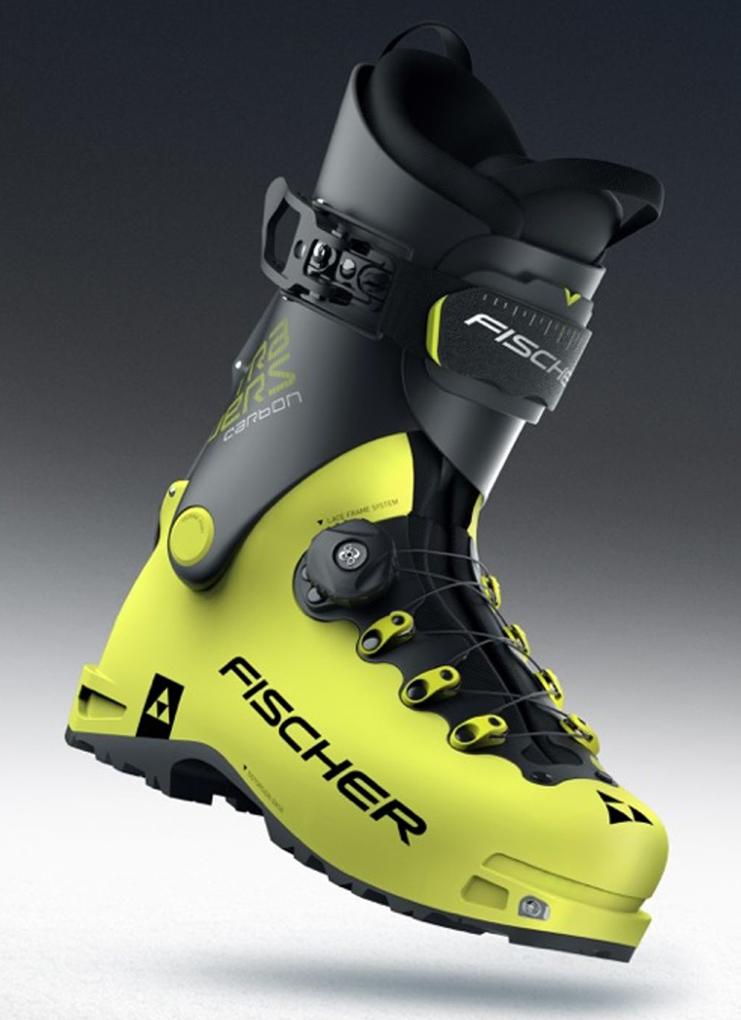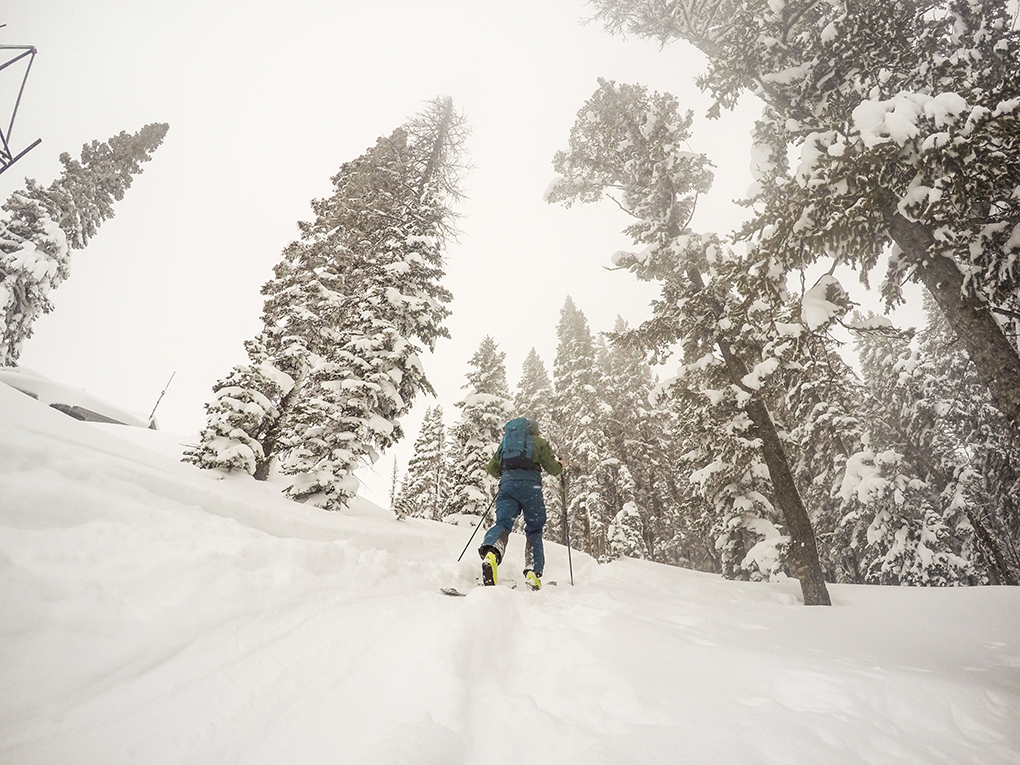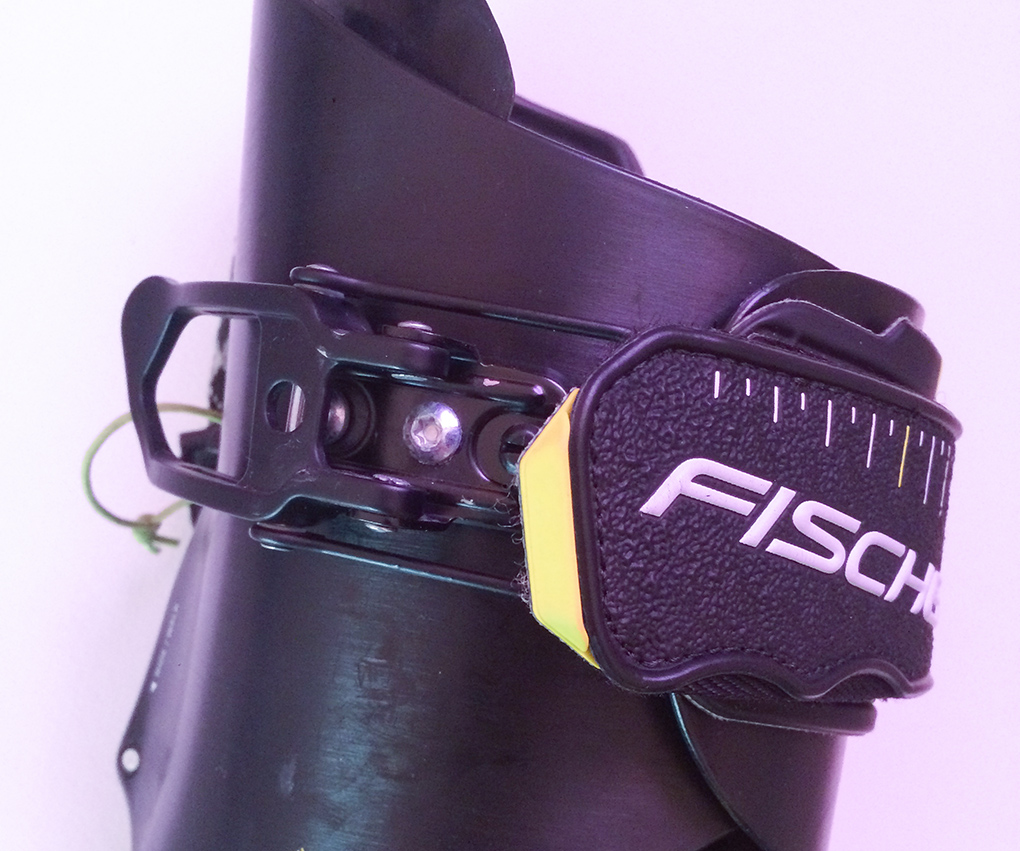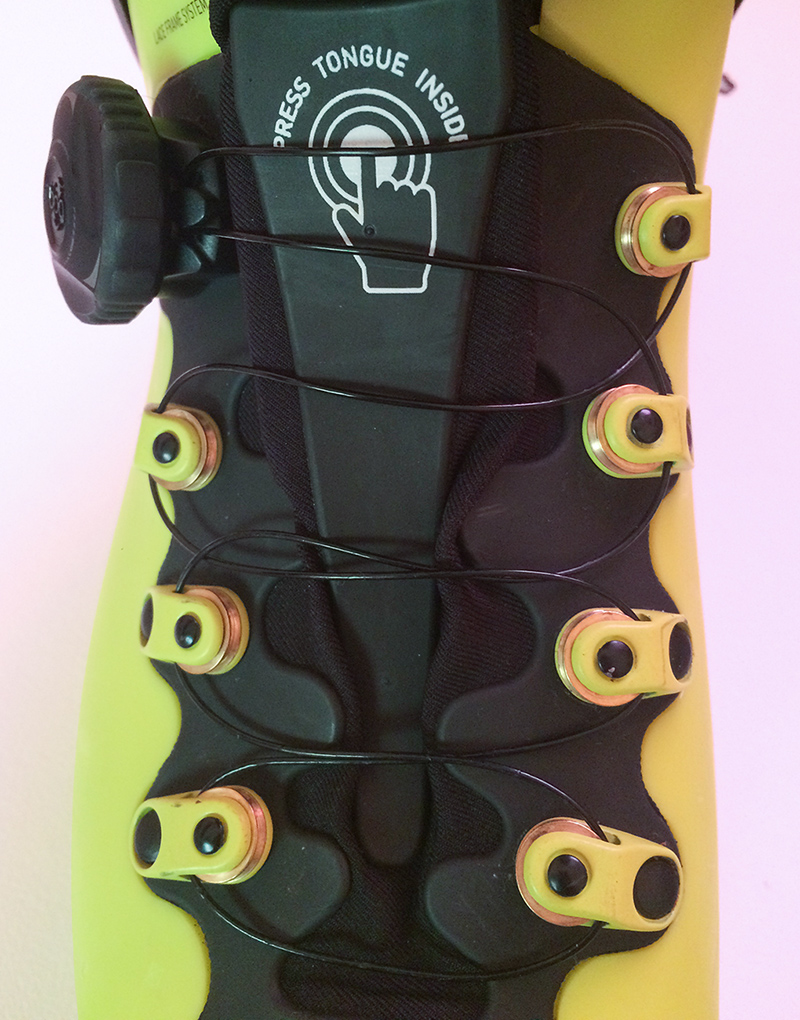
2018-2019 Fischer Travers Carbon
Size Tested: 27.5
Stated BSL (27.5): 296 mm
Stated Last: 100 mm
Stated Range of Motion: 80°
Stated Weight (26.5) : 980 g per boot
Blister’s Measured Weight per Boot:
• Shells, no liners: 890 & 896 grams
• Liners, no footbeds: 174 & 174 grams
• Shells + Liners: 1064 & 1070 grams
Test Locations: Northern NM backcountry; Glacier National Park, MT; Teton Pass & Togwotee Pass, WY
Skis Used: 186 cm Volkl BMT 109; 189 cm K2 Shreditor 112; 184 cm ON3P Steeple 102; 185 cm Kitten Factory Tours Lite
Bindings Used: G3 Ion, Marker Kingpin 13, Dynafit Speed Turn
Days Tested: 12
[Note: Our review was conducted on the 16/17 Travers Carbon, which was not changed for 17/18 or 18/19, apart from graphics.]
Intro
Lightweight touring boots are all the rage, and while Dynafit has typically dominated that market with their TLT series, Atomic jumped into the arena last year with the impressive Backland Carbon, and they are joined next season by Arc’teryx’s Procline and Fischer’s new Travers Carbon. We took an initial look at the Travers Carbon in our Flash Review, and now, after 12 days in the boot, in conditions ranging from blower pow to park jumps, we’ve got a pretty well-rounded sense of it.
The Travers Carbon stands out for several reasons, most notably the fact that it has no buckles. Instead, closure is handled by a unique brass bushing BOA system on the toe, and a single velcro powerstrap.

This closure system, combined with a thin, Grilamid shell, carbon sole plate, and minimalist liner make for a very light weight boot (1064 & 1070 grams per boot in a size 27.5). That’s lighter than the Atomic Backland, which comes in at 1167 & 1170 grams in a 27.5. And while we haven’t yet reviewed the new Dynafit TLT7, the Travers is competitive with its stated weight of 999 g, and beats out the new Arc’teryx Procline (stated weight of 1170 g per boot, size 27.5).
The Travers Carbon also features a best-in-class range of motion, at a stated 80°, and a built-in waterproof gaiter.
In other words, the Travers Carbon is designed to be an ultralight touring and ski mountaineering boot for long days in the backcountry.
Construction / Design
While the Dynafit TLT7, Arc’teryx Procline, and Atomic Backland Carbon all share futuristic styling with machined cutouts and space-age-looking components, the Travers Travers Carbon comes across as simple. All the closures and the walk mode are immediately obvious, and there’s no hidden cable routing or multi-purpose levers. While I don’t mind my ski boots looking like part of a space suit, there is something comforting about being able to easily see and understand every component of the boot, which could potentially make in-the-field fixes that much quicker and easier.
Power Strap
The Travers’ upper cuff is secured with a single velcro powerstrap, with a ratcheting buckle.

It’s very easy to micro-adjust this strap on the fly, and the buckle cinches it down securely. And I appreciate the fact that this top closure is fully independent from the walk mode. While most of the time I just leave the velcro buckled and flip the lever open to give myself some room while touring, there have been some situations (mostly steep side-hills) where I’ve locked the cuff while in walk mode to give my ankles a little extra support. This is an advantage the Travers has over Dynafit’s Ultralock buckle and walk mode combo system, since their functions are permanently linked—which is a problem Paul Forward notes in his review of the Dynafit Vulcan.
Boa System
The most striking part of the Travers is its Boa closure system over the forefoot. While we’ve seen Boa system’s on ski boots before (generally on rando-race boots) Fischer uses an exclusive brass roller system to eliminate friction when tightening the lace.

I was immediately impressed by how well the Boa evenly cinched the shell around my foot. There are no pressure points or tight spots as you often get with traditional buckles. Instead, tightening the Travers Carbon feels more like tightening up a basketball shoe around your foot.
Furthermore, I have a very high instep, and I often have trouble with pressure points from buckles. But I haven’t had any such issues so far with the Boa.
I also appreciate how easy it is to micro adjust the pressure, and I’ve found myself backing out the knob a few clicks when touring.
The big question with this Boa toe is durability. The cable has a lot of extra length, so you can really open the boot up without stressing the knob, which eliminates one cause of failure I’ve seen in Boa systems before. And since the knob is on the outside of the foot, it doesn’t get as banged up when climbing or if you knock your skis together, but the real test will come this spring as I scramble around on rocks a whole lot more. I’ll report back if I have any issues.
Walk Mode
The walk mode is actuated by a simple lever on the cuff that flips down to lock onto the lower. It’s impressively simple (there are no overlapping layers of plastic to line up) and solid. I’ve found minimal play (1-2mm) when cranking on the boots on a bench, but I have never noticed any play in the field.

It’s very easy to switch the walk mode lever, even when wearing thick gloves, and so far, I haven’t had any issues with it icing up.
Gaiter
Since the cuff and lower don’t overlap in the front or the heel, and the Boa system leaves a gap between the two halves of the lower, the Travers features a built-in waterproof gaiter that stretches from the shoe almost to the top of the cuff.
The upper edge of the gaiter has a grab tab so that it can be pulled up to fully fill the gap in the shell, and the inside of the gaiter has a velcro portion that mates with the liner and keeps it from sliding down.
So far I have had zero issues with water penetrating the gaiter.
Sole
The Travers Carbon features a carbon sole plate, and the rubber tread has cutouts that reveal it. The tread is aggressive, and it has held up well so far. But the real test will come this spring in the season of long, dry approaches and a lot of scrambling.
The sole is also impressively short: 296 mm in a 27.5, which edges out the Atomic Backland Carbon by 2 mm.
Crampon Compatibility
The one problem I found with this decreased sole length—and more specifically, with the smaller toe welt—was that it didn’t work with my Black Diamond Sabertooth crampons. The toe welt simply wasn’t big enough to engage. I took the boot around to several shops and found that I had a similar issue with other BD crampons, as well as crampons from Petzl. That’s pretty disappointing since this boot seems like a perfect mountaineering option, and not having the ability to affix spikes killed a lot of its potential. However, Black Diamond offers wider toe bails as an aftermarket part, and for $5 per boot, I was able to swap out the stock bail. This aftermarket bail locked onto the Travers’s toe perfectly, and it also works with my other touring boots. So if you’re planning on using these boots with automatic crampons, be ready to swap out your toe bail.
Liner
In his review of the Atomic Backland Carbon, Paul Forward compared the liner to a wrestling shoe. I’d say the Travers Carbon’s liner is an even more comfortable wrestling shoe. It’s very soft, and it bends incredibly easily while walking. The shell’s range of motion does not dramatically decrease when the liner is inserted.
It’s also worth noting that the Travers is very easy to put on and take off. Initially, the super soft liner threw me for a loop, but I found that when putting on the boot, you can simply put the boot in walk mode and fold the cuff of the shell back out of the way, and just put on the lower like a shoe. Then, when taking off the boots, I’ve found the opposite technique works well: I lock the cuff and pull out of the boot like a traditional ski boot.
Overall, the Fischer Travers Carbon is one of the easiest ski boots to put on and take off that I have ever used.
NEXT: Binding Compatibility, Fit, Etc.

How’d these boots work out for you this spring? Any durability issues? Between these and the Atomic carbon backlands which give you more control when you point your skis downhill? Thanks! It’s tough to find much info about these boots.
I bought Traverse Carbon last season and I was disappointed! They were to cold during January. I could not get my feet worm even when hiking!
After a month of skiing I had a 4-5 feet drop and the boot cracked! It broke so easy I could not believe I paid a fortune for such a boot!
I call bullshit on this review. “The broke” = nonsense. I have had mine in -13c for days with no worries. They are easy to use as boots as well around the snow campsite.
Any update on these? Would love a comparison to the TLT7 Performance boots.
I never skied the Travers but carpet tested them for a couple days in the house. I ended buying the TLT7. Here are my thoughts. I really wanted to like the Travers but I couldn’t get them to fit. Too much volume that I couldn’t suck up with the boa. The cloth gaiter seemed kind of awkward and like a potential disability issue. Boot was kinda tricky to get into. Felt like a really soft flex on the carpet. I’ve skied the TLT7 this winter. Definitely stiffer than the Travers. Lower volume. Easier to get on. Similar weight. Incredible walking/skinning performance.
Thanks Jeremy G
Anyone try these with a Intuition Pro Tour liner, as many have done with the Backlands, to improve downhill performance?
I’d like to hear some more about this too, since they seem pretty soft, carpet flex wise.
I am on my 3 years on a Fischer Travers boot (my thied one since i work in a small shop. I like them a lot (i should say i love them!!!!). My only problem is heel lift when in touring mode. Everything fit perfectly sizing wize BUT i always have a bit of heel lift. Put a shim inside on the heel block. A bit better. Not heat molded them. It is like my heel or hankle are thin a little bit. My feet is sliding back and forth very very lightly. No boot fitter in my area. Do you have a suggestion?
put a silicone heel cup inside your liner? Its a very economical shim
I love these boots after 100+ tours with them on. I am only now wishing I could simply replace the boot inserts as they are starting to wear in places. When you are camping these are easy to use, navigate a cold campsite and the liners are snug as a bug in the bag at night. Additionally, Fischer added a few straps and loops in the front of the liners to secure if you really need it. I have never had an issue with moisture or failure at the gaitor. I do get snow accumulation in the walk/ski arm when transitioning from uphill to downhill. Would be awesome if this was a little larger, enough to get a tip of a pole or a finger in and clear the snow out. Strenuous downhill leaves my toes a bit sore at the end of the day from being pushed forward hard but the boot handles it well. Ski – Mo = Super duper boots which are pretty easy to leverage with any crampon setup or snowshoe. I dig these boots so much and am planning to go into another pair in a few years when the next tech leap is witnessed. ***Sometimes with my kids I ski these boots in bounds and hard charging, I have never felt a compromise anywhere in the ankle or pressure points under the sole or outside edges.****
I know this post is old but I am hoping for some adivce with the crampons compatabilltiy. I purshaed a pair of saboertooths and got the wide toe bail. It still doesnt lock in for all for me. Am I missing something?
I dont have the carbon, but I cant imagine it is that different of a boot on the toe welt.
Did you manage to find a solution Paul? Also looking at these boots, and already have Sabertooths.
The boots work well with the crampons CAMP xlc 390, the fit is great and secure.